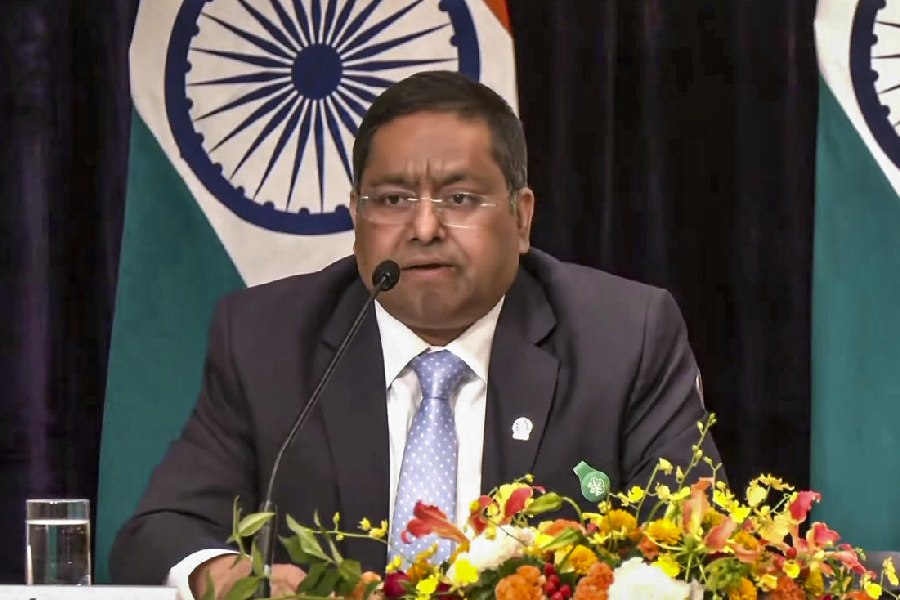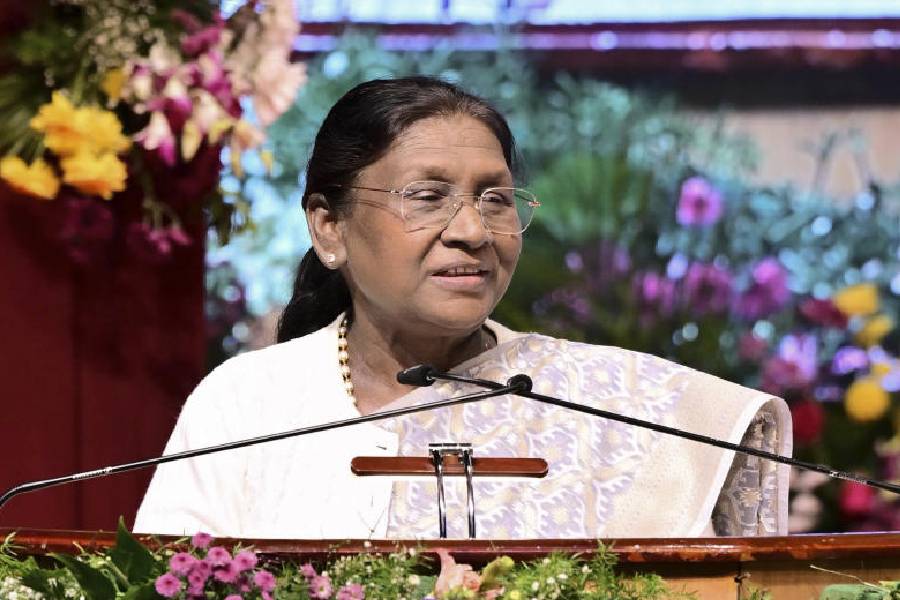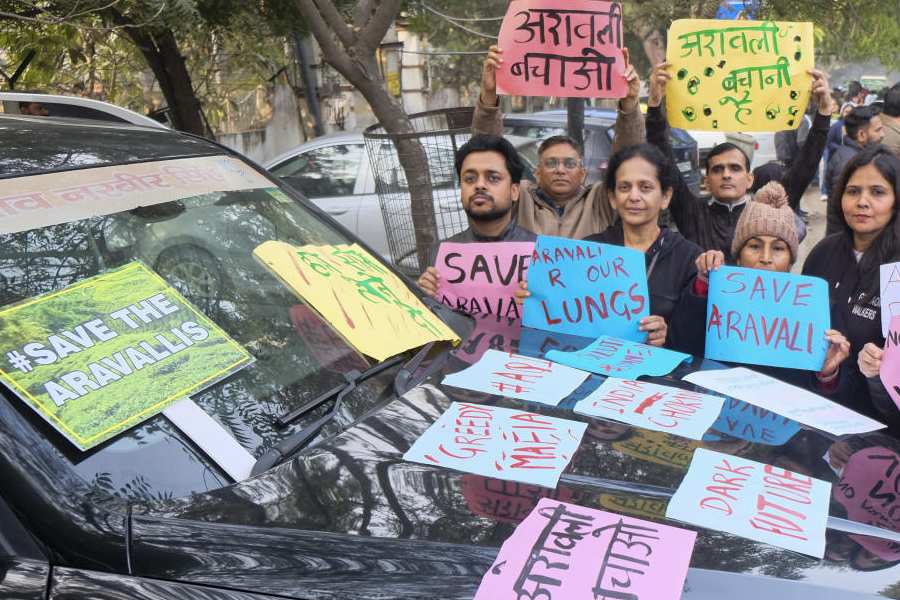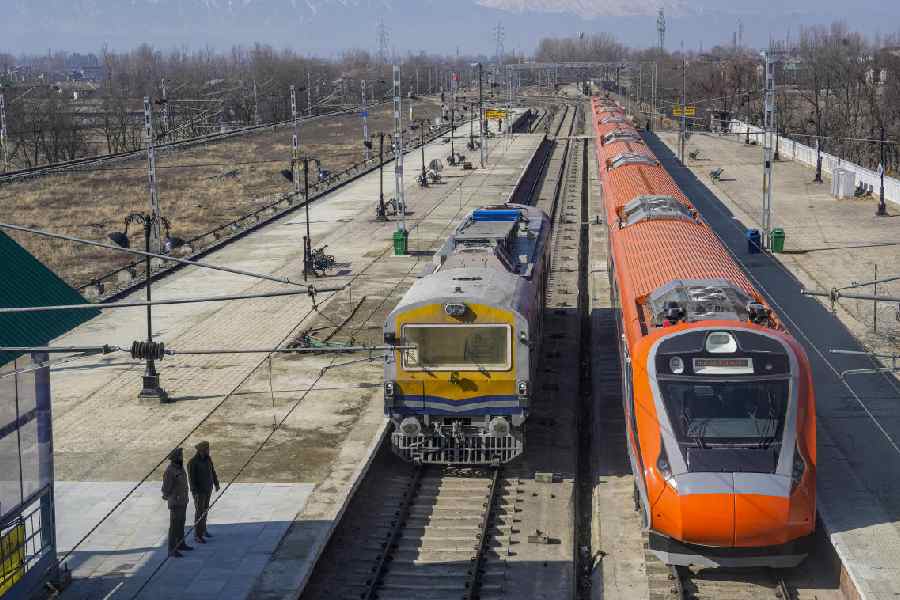 |
| ‘CPI (Maoist)’ written in Bengali on the Banspahari panchayat office. Picture by Sanjoy Chattopadhyaya |
Lalgarh, April 7: In Lalgarh, the Maoist writ now dictates the activities of panchayats run by the CPM.
When the Sijua panchayat wanted to dig a reservoir, the rebels told it to build a road instead. “We wanted to get the reservoir ready before this monsoon. But they told us to scrap the project,” a member said.
“They (most CPM leaders here prefer not to call Maoists by that name) wanted us to build a 7km kutcha road leading to a village from the metalled road between Lalgarh and Ramgarh. Who will dare question their demand?”
Preparations have begun for the construction of the road.
CPI (Maoist) members camping here and lending support to a tribal resistance against police have told all three gram panchayats — Sijua, Ramgarh and Lalgarh — in the Lalgarh police station area not to carry out any development work without their consent.
“Our hands are tied. They have paralysed our panchayat. No plan drawn up by the administration could be carried out in the past four months,” said the member of the Sijua panchayat.
During the month-long siege of Lalgarh by the tribal resistance group late last year, the offices of the three panchayats used to be closed.
“We opened our office in January but no work is being done. We come, chat and go,” the CPM leader said. The employees leave for home by 3pm, fearing Maoist attacks.
The Maoist influence is not limited to Lalgarh. In neighbouring Banspahari, the two-storey panchayat office looks like a rebel base from a distance with “CPI (Maoist)” written in a large font on the outside.
“This area is controlled by them. We have no hesitation to confess that no one will dare to erase the words from the wall,” said a member of the Banspahari panchayat.
A move is now on to upgrade the panchayat office. Computers and printers are being installed and cabins with plywood and glass panels are being built. The walls inside are being given a coat of light green paint.
Asked why the wall outside was being left untouched, the member asked: “Do you want me to die?”
Manju Murmu, the pradhan of the panchayat, said: “I’ll not speak a word on this.”
An officer at the Binpur (I) block office explained how the Maoists governed the rural bodies. “They go to the pradhan’s house to place their demands. Sometimes, they send a group of villagers with a list of demands. Going through them, it is not difficult to figure out that the plans can’t be the brainchild of illiterate tribals.”
A Maoist leader camping in the area said their objective was to free things under CPM control for years. “Earlier, CPM leaders used to dominate everything. Poor people used to suffer and the leaders siphoned off funds from panchayat offices. We have snatched the keys from them and the poor have started reaping the benefits,” he said.
A rebel leader said they had opposed the reservoir at Sijua because the area already had a tube-well.
The Maoist lists usually contain demands for village roads and orders on where tube-wells should be installed and who should get homes under the central housing scheme for the poorest of the poor.
A government officer accused the rebels of opposing all development work in villages that support the CPM.










